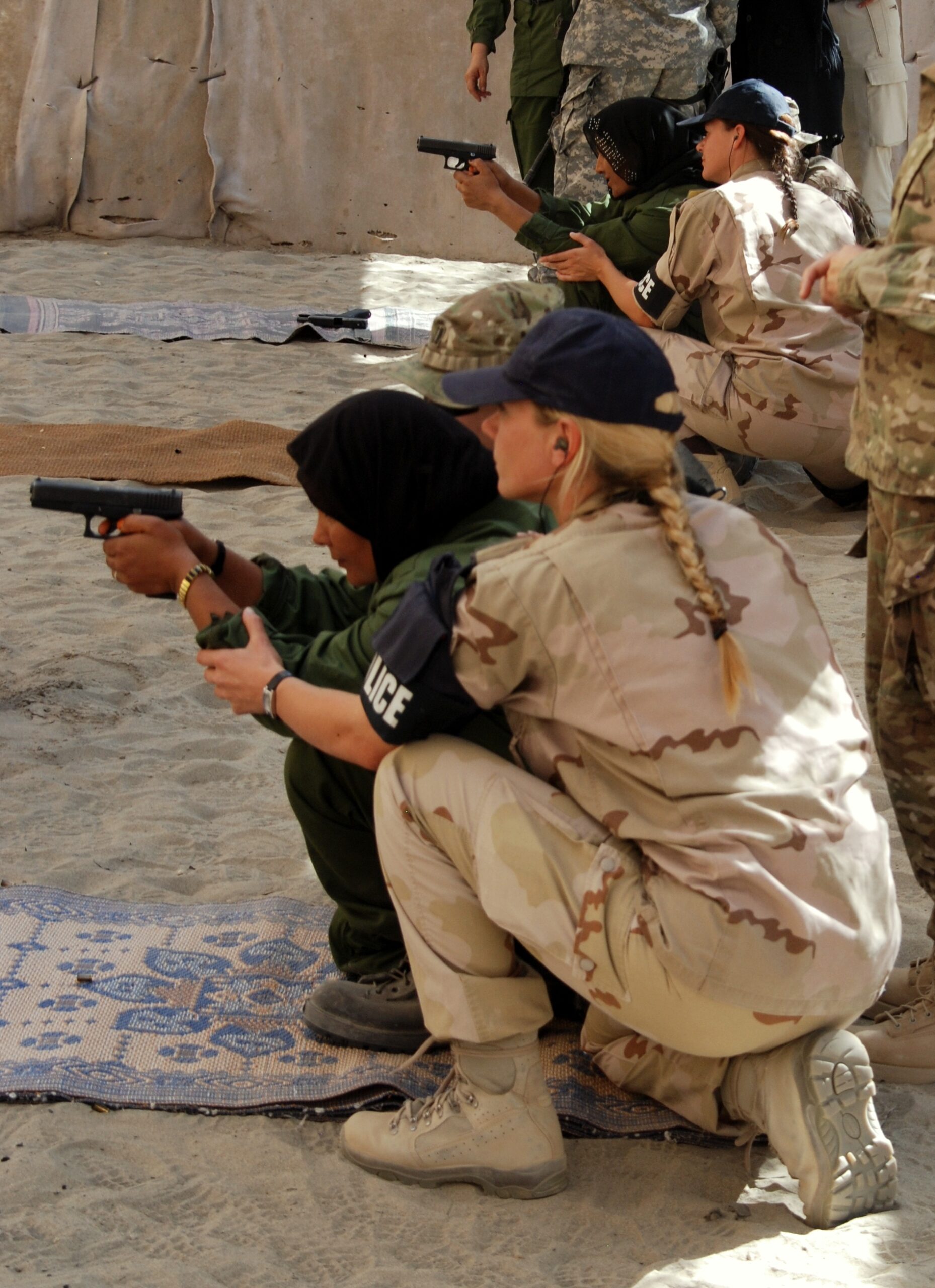Photo credit: Wikimedia Commons
Context:
Militarism, warfare, and the military itself all depend on gender hierarchies—the privileging of masculinity and its associated traits over femininity and its associated traits—to function. Women in Afghanistan are especially aware of this of sexism and inequality as they seek to join their country’s military and police force.
In the News:
“Lt. Cmdr. Rebekah Gerber of the United States Navy, a senior gender adviser for the Afghan Ministry of Defense, [is] one of a dozen advisers from NATO countries working with the Afghan government to integrate and support both men and women across the security sector. The lofty end goal: gender equality…Gerber comes bearing a bold message for the Afghans and her coalition colleagues: ‘Get on board or get out — it’s happening.’ It’s a job Gerber doesn’t take lightly.”
“Advisers like Gerber are tasked with leading that charge, part of a NATO policy born in the wake of United Nations Security Council Resolution 1325, passed in 2000, which stresses the importance of women’s involvement in global peace and security. Since then, a growing body of evidence has found that when women play a role in the security sector, take part in peace negotiations and are involved in rebuilding after war, women feel more comfortable reporting sexual violence and nations enjoy a more stable and lasting peace. To enact the resolution and appease international donors eager to support women’s rights, Afghanistan, a United Nations member state, adopted an internationally funded national action plan that details everything from engaging men in addressing violence against women to including women at decision-making levels nationally, regionally and locally. But 17 years into America’s longest war, in which the argument for protecting and “saving” Afghan women has long shaped the rhetoric to invade and maintain troop presence, their advancement in the security sector is still largely at odds with cultural perceptions of women’s place in society. Progress, as defined by the United States and NATO leadership, has been painfully slow, and there’s concern that programs to recruit and train women have only put them in more danger. Despite billions of United States tax dollars spent on bolstering Afghan troops and paying their salaries — nearly $160 million budgeted in the last three years alone to support female forces — Afghanistan has never come close to its set recruitment benchmarks for women. Those involved in and familiar with NATO gender efforts say it could take generations before real, lasting progress is made for Afghan women in uniform.”
Insight from Peace Science:
- Critical feminist security scholars have a different “entry point” to the study of security than other scholars, largely due to their attention to everyday lived experience and power relations, making them more attuned to the way in which “security”—and society more broadly—is deeply militarized.
- Militarism, militarized security, warfare, and the military itself all depend on gender hierarchies—the privileging of masculinity and its associated traits over femininity and its associated traits—and “gendered myths and images” to function.
- Gender hierarchies support other forms of military hierarchy and therefore are used not only to distinguish men from women but also to distinguish between different men (through, for instance, being denigrated and disciplined with feminine name-calling).
References:
- The Many Dangers of Being an Afghan Woman in Uniform By Sophia Jones for the New York Times. Oct. 5, 2018.
- Peace Science Digest Special Issue: Gender & Conflict “Critical Feminist Insights on Security, Militarism, and the Inclusion of Women in the Military”

